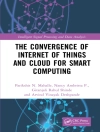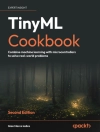Users of signal processing systems are never satis?ed with the system they currently use. They are constantly asking for higher quality, faster perf- mance, more comfort and lower prices. Researchers and developers should be appreciative for this attitude. It justi?es their constant e?ort for improved systems. Better knowledge about biological and physical interrelations c- ing along with more powerful technologies are their engines on the endless road to perfect systems. This book is an impressive image of this process. After “Acoustic Echo 1 and Noise Control” published in 2004 many new results lead to “Topics in 2 Acoustic Echo and Noise Control” edited in 2006 . Today – in 2008 – even morenew?ndingsandsystemscouldbecollectedinthisbook.Comparingthe contributions in both edited volumes progress in knowledge and technology becomesclearlyvisible:Blindmethodsandmultiinputsystemsreplace“h- ble” low complexity systems. The functionality of new systems is less and less limited by the processing power available under economic constraints. The editors have to thank all the authors for their contributions. They cooperated readily in our e?ort to unify the layout of the chapters, the ter- nology, and the symbols used. It was a pleasure to work with all of them. Furthermore, it is the editors concern to thank Christoph Baumann and the Springer Publishing Company for the encouragement and help in publi- ing this book.
Table of Content
Speech Enhancement.- Low Delay Filter-Banks for Speech and Audio Processing.- A Pre-Filter for Hands-Free Car Phone Noise Reduction: Suppression of Harmonic Engine Noise Components.- Model-Based Speech Enhancement.- Bandwidth Extension of Telephony Speech.- Dereverberation and Residual Echo Suppression in Noisy Environments.- Low Distortion Noise Cancellers – Revival of a Classical Technique.- Echo Cancellation.- Nonlinear Echo Cancellation Based on Spectral Shaping.- Signal and System Quality Evaluation.- Telephone-Speech Quality.- Evaluation of Hands-free Terminals.- Multi-Channel Processing.- Correlation-Based TDOA-Estimation for Multiple Sources in Reverberant Environments.- Microphone Calibration for Multi-Channel Signal Processing.- Convolutive Blind Source Separation for Noisy Mixtures.- Binaural Speech Segregation.- Spatio-Temporal Adaptive Inverse Filtering in the Wave Domain.- Selected Applications.- Virtual Hearing.- Dynamic Sound Control Algorithms in Automobiles.- Towards Robust Distant-Talking Automatic Speech Recognition in Reverberant Environments.












